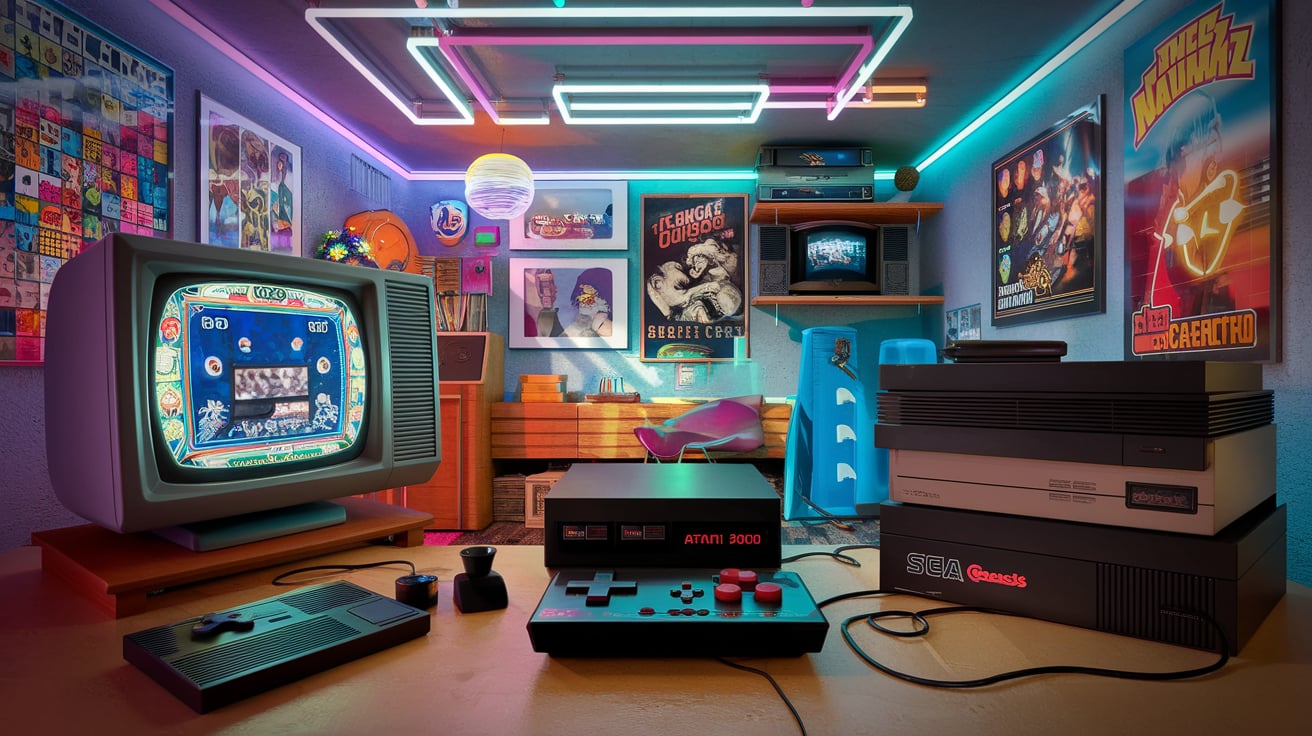
How Technology Has Shaped the Evolution of Gaming
The journey of gaming from its humble beginnings to the sophisticated experiences we enjoy today is a remarkable story of technological advancement.
The evolution of gaming technology has revolutionized how we play, interact, and connect with others.
This blog explores the major milestones in gaming history, highlighting the critical role technology has played in shaping the gaming landscape.
The Golden Age of Arcade Games
The late 1970s to early 1980s marked the Golden Age of arcade games.
Arcade machines became cultural icons, drawing players into public spaces with their vibrant graphics and addictive gameplay.
Technology during this era saw the introduction of microprocessors, allowing for more complex games and better graphics.
Games like "Pac-Man" and "Donkey Kong" became household names, providing a competitive environment and a sense of community among players.
These machines set the stage for future developments by demonstrating the potential of interactive entertainment.
As technology improved, so did the experience.
The introduction of sound chips enhanced gameplay, creating immersive experiences that kept players coming back for more.
In essence, the Golden Age of arcade games laid the foundation for the gaming industry as we know it today, showing the world that games could be both a form of entertainment and a cultural phenomenon.
The Rise of Home Consoles
As technology advanced, home consoles began to emerge, allowing players to enjoy gaming in the comfort of their homes.
The transition from arcade to home gaming marked a significant shift in how people experienced video games.
The release of systems like the Atari 2600 and the Nintendo Entertainment System changed the landscape forever, making gaming accessible to a wider audience.
Home consoles not only provided convenience but also introduced multiplayer experiences through local connections.
This allowed families and friends to play together, fostering a new social dynamic around gaming.
Moreover, the technology in these consoles evolved rapidly, moving from 8-bit graphics to 16-bit and beyond, resulting in richer, more engaging gameplay.
The rise of home gaming systems also contributed to the development of gaming culture.
Gamers began to form communities, share strategies, and discuss their favorite titles.
This era set the stage for future innovations, blending technology with entertainment in ways previously thought impossible.
The Advent of 3D Graphics and Online Play
The evolution of gaming took another leap forward with the introduction of 3D graphics in the 1990s.
This technological breakthrough allowed for more realistic environments and character designs, enhancing player immersion.
Titles like "Doom" and "Final Fantasy VII" showcased the power of 3D graphics, setting new standards for visual storytelling in games.
Simultaneously, the advent of online play transformed how games were played.
With the rise of the internet, players could connect globally, competing or collaborating with others in real time.
This change revolutionized multiplayer gaming, paving the way for popular titles like "World of Warcraft" and "Call of Duty."
The ability to play with others across distances created a sense of community that transcended physical boundaries.
As technology continued to evolve, so did the gaming experience.
The introduction of downloadable content (DLC) and updates allowed developers to enhance games post-launch, keeping players engaged for longer periods.
In summary, the shift to 3D graphics and online play represented a critical point in gaming history, merging technology with social interaction in unprecedented ways.
The Influence of Artificial Intelligence
Artificial intelligence has emerged as a game-changer in the gaming industry, significantly altering gameplay and development processes.
AI technologies enhance player experiences by providing more realistic and adaptive gameplay, leading to dynamic challenges that adjust based on a player's skill level.
For example, games like "The Last of Us" utilize AI to create lifelike character behaviors and decisions, making the gaming experience more immersive.
Moreover, AI plays a crucial role in game development.
Developers use machine learning algorithms to analyze player behavior and feedback, allowing them to refine gameplay mechanics and create more engaging experiences.
This data-driven approach has led to the development of intelligent NPCs (non-player characters) that respond authentically to player actions.
As the gaming industry continues to innovate, AI's influence is expected to grow, driving advancements in virtual reality and augmented reality experiences.
The possibilities are limitless, with AI paving the way for more personalized gaming experiences that adapt to individual preferences.
Future Trends in Gaming Technology
Looking ahead, several emerging technologies are poised to shape the future of gaming.
Virtual reality (VR) and augmented reality (AR) are at the forefront of this evolution, offering players immersive experiences that blur the lines between reality and the digital world.
With advancements in hardware, VR has become more accessible, allowing for deeper engagement with gaming narratives and environments.
Furthermore, cloud gaming is revolutionizing how games are played, enabling players to access high-quality titles without the need for expensive consoles.
This shift democratizes gaming, making it accessible to a broader audience and facilitating cross-platform play.
As the industry evolves, we can expect to see innovations like haptic feedback technology, which enhances the sensory experience by allowing players to feel the game's impact through vibrations and movements.
In conclusion, the evolution of gaming technology is an ongoing journey.
With each advancement, we move closer to a future where gaming is even more interactive, inclusive, and immersive.
